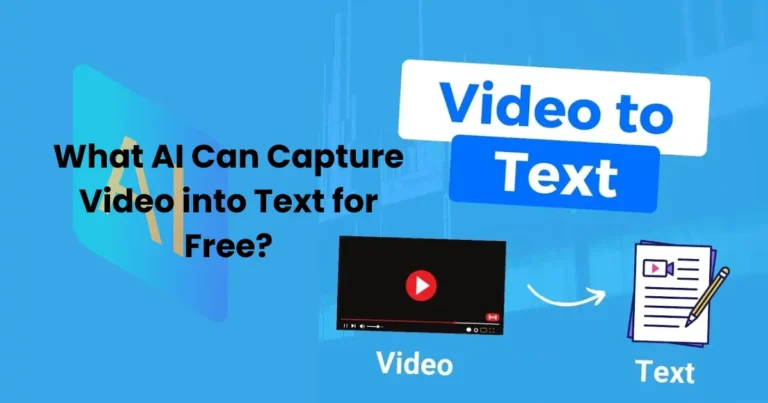AI to Localize Video Content: Revolutionizing Global Reach

Contents
- 1 What Is Video Localization?
- 2 How AI Enhances Video Localization
- 3 Benefits of Using AI to Localize Video Content
- 4 Top AI Tools for Video Localization
- 5 Best Practices for Using AI to Localize Video Content
- 6 Challenges and Limitations of AI Localization
- 7 Real-World Applications of AI Video Localization
- 8 The Future of AI in Video Localization
In today’s interconnected world, businesses and content creators strive to reach global audiences, and AI to localize video content offers a game-changing solution. By leveraging artificial intelligence, you can seamlessly adapt videos for diverse markets, ensuring cultural relevance and linguistic accuracy. This article explores how AI revolutionizes video localization, from automated subtitles to voice dubbing, and why it’s a must-have for global success. Moreover, we’ll dive into the tools, benefits, and best practices to maximize your video’s impact across borders. Consequently, you’ll learn how to engage audiences effectively while saving time and resources.
What Is Video Localization?
Localization goes beyond simple translation. Specifically, it involves adapting content to suit the cultural, linguistic, and regional preferences of a target audience. For videos, this includes translating dialogue, adding subtitles, dubbing voices, and adjusting visual elements to resonate with local viewers. AI to localize video content streamlines this process by automating complex tasks, ensuring accuracy, and reducing costs. For instance, AI can analyze a video’s audio, generate subtitles, and even create localized voiceovers in minutes.
Why Localization Matters
Globalization demands content that speaks to diverse audiences. According to Statista, over 60% of internet users prefer content in their native language. Therefore, localization enhances user experience, boosts engagement, and increases conversion rates. Without localization, your videos risk alienating viewers or losing cultural context. AI to localize video content addresses these challenges by delivering tailored experiences at scale.
How AI Enhances Video Localization
AI to localize video content harnesses advanced technologies like natural language processing (NLP), speech recognition, and machine learning to deliver high-quality results. Below, we explore the key ways AI transforms the localization process.

1. Automated Subtitles and Captions
Subtitles make videos accessible to non-native speakers and hearing-impaired audiences. Traditionally, creating subtitles required manual transcription and translation, which was time-consuming and expensive. However, AI-powered tools like Descript or Veed.io can automatically transcribe audio, translate it into multiple languages, and sync subtitles with video frames. As a result, you save time while ensuring accuracy.
For example, platforms like YouTube use AI to generate captions in real-time. These tools analyze audio patterns and context, producing subtitles with minimal errors. Additionally, AI can adjust subtitle timing to match dialogue perfectly, enhancing viewer experience.
2. AI-Driven Dubbing
Dubbing replaces original audio with translated voiceovers, creating a natural viewing experience. AI to localize video content excels in this area by generating human-like voices in multiple languages. Tools like Synthesia and Respeecher use text-to-speech technology to create realistic voiceovers that match the speaker’s tone and emotion.
Moreover, AI dubbing preserves lip-sync accuracy by analyzing facial movements and adjusting audio accordingly. Consequently, viewers enjoy seamless, immersive content without noticing the localization process. This technology is particularly valuable for movies, e-learning platforms, and marketing videos targeting global markets.
3. Cultural Adaptation
AI doesn’t just translate words; it understands cultural nuances. For instance, tools like DeepL and Google Translate use machine learning to adapt idioms, slang, and references to suit local audiences. Similarly, AI to localize video content can modify visuals, such as text overlays or symbols, to align with cultural expectations. This ensures your content feels native to the target market, avoiding potential missteps.
4. Real-Time Localization
Speed is critical in today’s fast-paced digital landscape. AI enables real-time localization, allowing creators to publish content across regions simultaneously. For example, live-streaming platforms like Twitch use AI to provide instant subtitles in multiple languages. This capability ensures that global audiences can engage with content as it’s released, maximizing reach and impact.
Benefits of Using AI to Localize Video Content
AI to localize video content offers numerous advantages, making it an essential tool for businesses and creators. Below are the key benefits:

Cost Efficiency
Traditional localization required hiring translators, voice actors, and editors, which was costly. AI reduces these expenses by automating tasks. For instance, a single AI tool can handle transcription, translation, and dubbing, cutting costs by up to 70%, according to industry reports.
Time Savings
Manual localization could take weeks, especially for long-form content. In contrast, AI completes these tasks in hours or even minutes. As a result, businesses can launch campaigns faster, capitalizing on market trends and opportunities.
Scalability
AI to localize video content enables creators to target multiple markets simultaneously. Whether you’re localizing for 5 or 50 languages, AI tools scale effortlessly, ensuring consistent quality across regions.
Enhanced Accuracy
Modern AI systems use context-aware algorithms to minimize translation errors. For example, tools like Microsoft Translator achieve over 95% accuracy in high-resource languages like Spanish or Mandarin. Consequently, your content remains authentic and professional.
Accessibility
Localized videos reach broader audiences, including those with hearing impairments or language barriers. By incorporating AI-generated subtitles and captions, you make your content inclusive, aligning with global accessibility standards.
Top AI Tools for Video Localization
Several AI-powered platforms excel at localizing video content. Below, we highlight some of the best tools available in 2025, along with their key features.

1. Descript
Descript offers automated transcription, translation, and subtitle generation. Its AI-driven Overdub feature creates realistic voiceovers, making it ideal for dubbing. Additionally, Descript’s intuitive interface allows users to edit subtitles and audio with ease.
2. Synthesia
Synthesia specializes in AI-generated video content and dubbing. It supports over 120 languages and creates lifelike avatars for voiceovers. Moreover, its integration with video editing tools streamlines the localization workflow.
3. Veed.io
Veed.io simplifies subtitle creation and translation for short-form videos. Its AI analyzes audio and generates captions in multiple languages, perfect for social media content. Additionally, Veed.io offers customizable subtitle styles to match your brand.
4. Respeecher
Respeecher focuses on voice cloning and dubbing. Its AI replicates a speaker’s voice in different languages while preserving emotional tone. This tool is popular in the film industry for creating authentic dubbed content.
5. Amara
Amara combines AI with human oversight for high-quality subtitles and translations. Its collaborative platform allows teams to refine AI-generated outputs, ensuring cultural accuracy.
Best Practices for Using AI to Localize Video Content
To maximize the effectiveness of AI to localize video content, follow these best practices:

1. Choose the Right Tool
Select a tool that aligns with your needs. For example, use Synthesia for dubbing-heavy projects or Veed.io for quick social media videos. Research each platform’s language support and features before committing.
2. Review AI Outputs
While AI is highly accurate, it’s not perfect. Always review subtitles, translations, and voiceovers for errors or cultural inaccuracies. For instance, idioms may require manual tweaks to resonate with local audiences.
3. Optimize for SEO
To boost discoverability, incorporate localized keywords into video titles, descriptions, and subtitles. For example, if targeting Spanish-speaking audiences, use relevant Spanish keywords. Additionally, ensure your videos are indexed on platforms like YouTube for maximum visibility.
4. Test with Local Audiences
Before publishing, test localized content with native speakers to ensure cultural relevance. This step prevents misunderstandings and enhances audience connection.
5. Leverage Analytics
Use analytics tools to track engagement across regions. Platforms like YouTube Analytics provide insights into which localized videos perform best, helping you refine your strategy.
Challenges and Limitations of AI Localization
While AI to localize video content is transformative, it has limitations. Below are some challenges to consider:
1. Cultural Nuances
AI may struggle with highly contextual or region-specific content. For example, humor or slang may not translate accurately without human intervention.
2. Voice Authenticity
Although AI-generated voices are improving, they may lack the emotional depth of human actors. This can affect the authenticity of dubbed content.
3. Language Limitations
AI performs best with high-resource languages like English or French. For low-resource languages, accuracy may decrease, requiring manual edits.
4. Technical Constraints
AI tools require stable internet and computing power. For large-scale projects, processing times may increase, impacting deadlines.
To overcome these challenges, combine AI with human expertise. For instance, use AI for initial translations and hire native speakers for final reviews.
Real-World Applications of AI Video Localization
AI to localize video content is reshaping industries. Below are some examples of its impact:

1. Entertainment
Streaming platforms like Netflix use AI to localize movies and series, offering subtitles and dubbing in dozens of languages. This allows them to reach global audiences without significant delays.
2. E-Learning
Educational platforms like Coursera leverage AI to localize courses, making them accessible to non-English speakers. AI-generated subtitles and voiceovers enhance learning experiences.
3. Marketing
Brands use AI to localize video ads, tailoring campaigns to regional preferences. For example, Coca-Cola uses AI to adapt its global campaigns for local markets, boosting engagement.
4. Gaming
Video game developers localize in-game dialogue and subtitles using AI, ensuring immersive experiences for players worldwide.
The Future of AI in Video Localization

The future of AI to localize video content is promising. Advancements in NLP and machine learning will improve translation accuracy and voice authenticity. Additionally, real-time localization will become standard, enabling instant global distribution. Furthermore, AI may integrate augmented reality (AR) to overlay localized text on videos dynamically, enhancing interactivity.
As AI evolves, costs will decrease, making localization accessible to small businesses and independent creators. Consequently, the global content landscape will become more inclusive and diverse.
Conclusion
AI to localize video content is revolutionizing how creators and businesses connect with global audiences. By automating subtitles, dubbing, and cultural adaptations, AI saves time, reduces costs, and enhances accessibility. Moreover, tools like Descript, Synthesia, and Veed.io make localization seamless and scalable. To maximize impact, combine AI with human oversight, optimize for SEO, and test with local audiences. As technology advances, AI will continue to break down language barriers, enabling content to resonate worldwide. Embrace AI to localize video content today and unlock your global potential.






